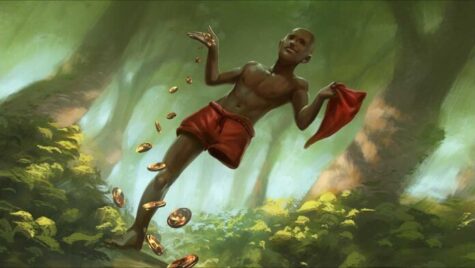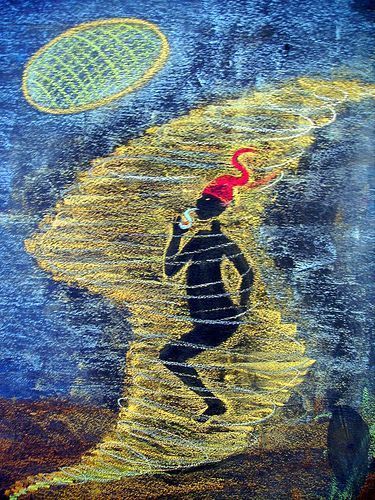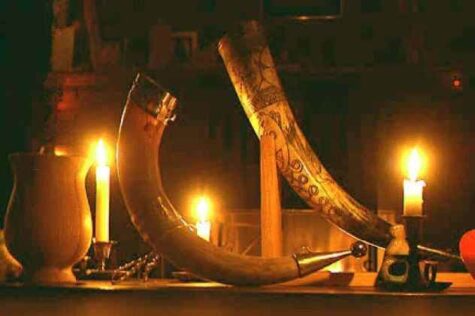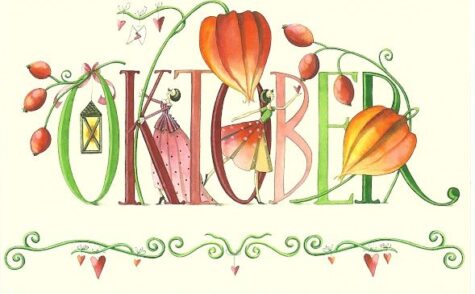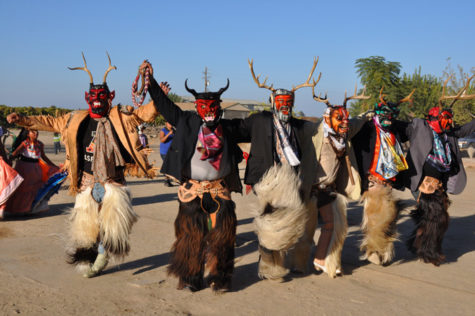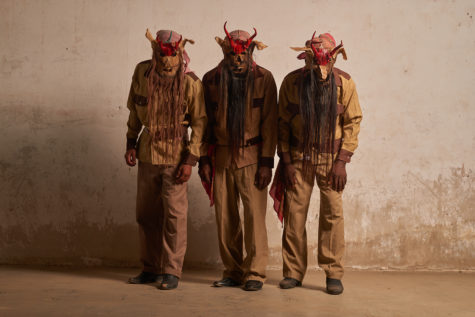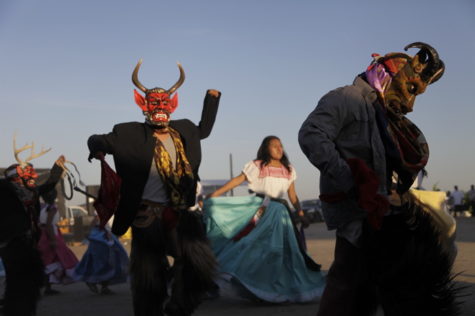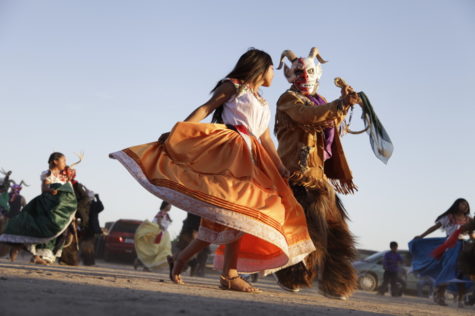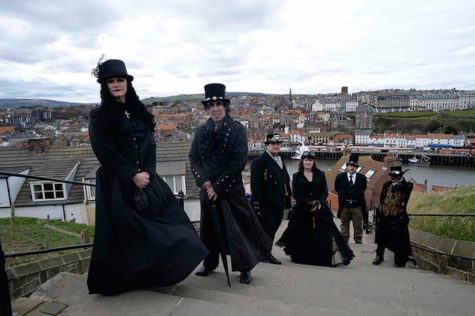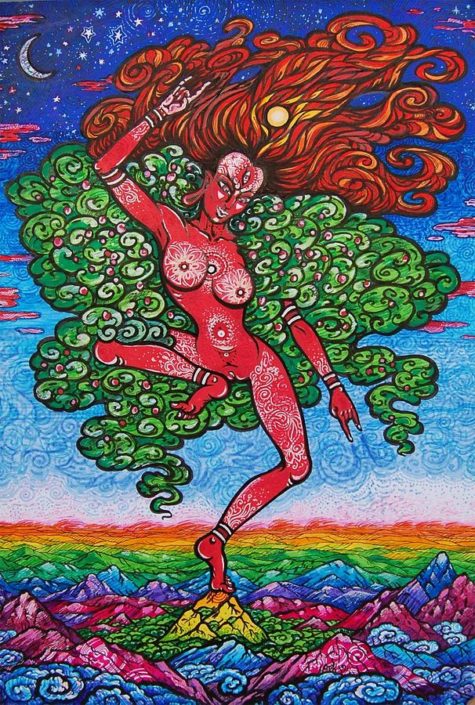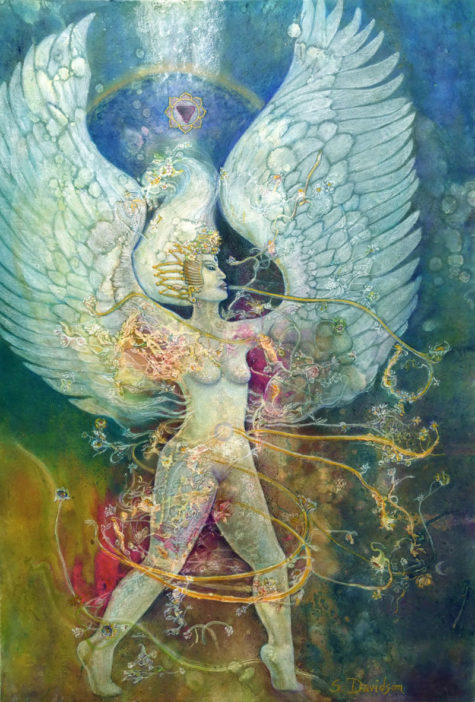October
The Saci is one of the most well-known Brazilian legends – it even has its own national holiday. October 31 is Dia do Saci, or Saci Day. It was established to direct attention away from the American Halloween tradition and toward Brazilian culture but few Brazilians commemorate it, even with official support in São Paulo state and a few municipalities.
It is celebrated mainly among the youngest students, for whom Saci plays a magical and at the same time frightening role. Many teenagers still prefer Halloween with its pumpkins, costumes, and trick-or-treating.
Who is Saci?
Saci (pronounced [saˈsi] or [sɐˈsi]) is a character in Brazilian folklore. In some regions, the Saci appears as an evil being, in others, as a playful and graceful creature. He is a one-legged black or bi-racial youngster, who smokes a pipe and wears a magical red cap that enables him to disappear and reappear wherever he wishes (usually in the middle of a dust devil).
Considered an annoying prankster in most parts of Brazil, and a potentially dangerous and malicious creature in others, he nevertheless grants wishes to anyone who manages to trap him or steal his magic cap. However, his cap is often depicted as having a bad smell. Most people who claimed to have stolen this cap say they can never wash the smell away.
Every dust devil, says the legend, is caused by the spin-dance of an invisible Saci. One can capture him by throwing into the dust devil a rosary made of separately blessed prayer beads, or by pouncing on it with a sieve. With care, the captured Saci can be coaxed to enter a dark glass bottle, where he can be imprisoned by a cork with a cross marked on it. He can also be enslaved by stealing his cap, which is the source of his power. However, depending on the treatment he gets from his master, an enslaved Saci who regains his freedom may become either a trustworthy guardian and friend, or a devious and terrible enemy.
Saci by Astrud Gilberto
Here’s a really song about Saci, by Astrud Gilberto with The James Last Orchestra. The lyrics (in English) follow the video.
English Lyrics for Saci:
In the middle of the night the rooster crowed three times
Many times it sang before the morning came
That’s when I saw that beauty
Of the washerwomen at the job of washing the clothes we wear
Often the cock
And I could not stop crying
alone behind the steering wheel that skidded
noticed a clear instant
What moite behind the Saci was crying
‘Inda could hear, do not know where
the song rolled in the air
There goes Pererê Saci jumping on his leg
To see the washerwomen in Chororó source
there comes Pererê Saci jumping on his leg
Deep deeper the woods
Cry, cry and no one has pity
There goes Pererê Saci jumping on his leg
To see the washerwomen in Chororó source
there comes the Pererê Saci jumping on his leg
Deep deeper the woods
Cry, cry and no one has pity
Here comes Saci, Here comes Saci, Here comes Saci Pererê
Ó Saci, ó Saci, ó Saci Pererê
There goes Pererê Saci jumping on his leg
To see the washerwomen in Chororó source
there comes the Pererê Saci jumping on the leg
Deep deeper the woods
Cry, cry and no one has pity
There goes Pererê Saci jumping on leg
To see the washerwomen in Chororó source
there comes the pererê saci jumping on the leg
Deep deeper the woods
Cry, cry and no one has pity
Here comes Saci, Here comes Saci, Here comes Saci Pererê
Here comes Saci, Here comes Saci, Here comes Saci Pererê
Sources:
The celebration of Samhain, now known as Halloween, occurs during the Reed Moon. To the Celts this month hailed the end of the year, a time to cull the livestock and to connect with ancestors. All around the world festivals that honor the dead are celebrated. During the Reed Moon, light a candle for loved ones who have died and you may receive a message from the spirit world.
- Date: October 28 – November 23
- Celtic Oghum Name: Ngetal, Negetal (pronounced nyettle)
- Themes: Healing, Home, Magick, Invisibility.
Reed Month is a good time to use divination to gain insights into the year that has passed. Perform energy work that will release old energy, burn symbols of illness on your bonfire on November the 5th during your Guy Fawkes celebrations. Remember the Celtic year does not begin until the Winter Solstice so use this interval to dream, not to make plans for the future.
Reed is typically used to make wind instruments, and this time of year, its haunting sounds are sometimes heard when the souls of the dead are being summoned to the Underworld. This is a time for divination and scrying. If you’re going to have a seance, this is a good month to do it. This month, do magical workings related to spirit guides, energy work, meditation, celebration of death, and honoring the cycle of life and rebirth.
Ngetal is the month of the Reed. This is the time of the Elm moon, and is the time when the dead are being summoned to the Underworld. This is usually the time when seances are held, and is also the perfect time for divination and scrying.
Try bringing some Reed magick into your life with these traditional examples.
- Leap over a small bonfire to leave behind the old year.
- Eat an apple on Samhain at midnight to dream of your spirit guide.
- Carve out a turnip or pumpkin as a lantern of protection.
- Bury an apple at a crossroads as an offering to the spirits of the dead.
- Use the runes for divination or to gain insight into your current situation.
Harness the power of the plant of protection and divination during this lunar month. Using Reed energy can help you to connect with your ancestral roots or let go of the past.
Reed the Inquisitor
The one that keeps secrets between the tree signs of the Celtic horoscope is the Reed. This sign can dig deep to find the real meaning of things and discover the truth. People born under this Celtic tree sign love a good story, gossip and scandals. This makes them perfect historians, journalists, detectives, and archaeologists. They have the ability to find the core of things and strip every layer of the story. However, they tend to be a bit manipulative at times, but still have a strong sense of truth and honor. Suited companions for this curious sign are other Reeds, Ash or Oak signs.
Reed individuals are complex, tenacious and fearless. Proud and independent, they have great strength of character and will rarely compromise, believing they have a role to play which excludes any signs of weakness or the luxury of “sitting on the fence.” Reed people are forceful and thrive on challenges, holding an innate belief in their own destiny.
Possessed with a powerful presence and a great deal of personal magnetism, Reed individuals attract most people but tend to repel the overly-sensitive. They are never found lacking in the ability to surmount even the most overwhelming odds. Due to their power, however, they must follow a narrow line of virtuous morals. If that line is strayed from, then they can become very dangerous people.
They are known as the great survivors of life but often meet with the hostility of others rather than the offer of a helping hand. It is necessary for Reed individuals to unite a sense of purpose with their strong will in order to prevent a path toward self-destruction.
Note:
In Celtic times, the Fern was associated with the ‘ngetal’ ogham – but there is actually some confusion over which plant or tree the ogham letter ‘ngetal’ actually refers to. Occasionally it is thought to refer to dwarf elder. The Reed Moon is sometimes referred to as the Elm Moon by modern Pagans.
The Ogham Tract text, which dates from the 12th century, links Fern to the ngetal ogham – but the earlier Scholars Primer links the ngetal ogham to broom.
Though often used with great imprecision, the term “Reed” as it applies to the Ogham is the Common Reed or Broom, a giant grass with stems which can grow to be 12 feet tall. It is found in abundance in the British Isles, usually in marshy areas where it often forms dense stands and blooms with yellow pod-shaped flowers. As with most other grasses, the vertical stems of the Reed (which can be very thick and strong) live only for a single year, dying in the Autumn to be replaced with new green shoots in the Spring. The dead stems have a tendency to rattle and whisper in late Autumn winds.
It is likely that a specific plant was less important here than the use which the broom, Reed, or Fern could be put to, which uses were very similar, including thatching, fuel, bedding, compost or mulch.
Reed Magick and Lore
The Reed grows in silence, thin and slender, by watersides and marshlands, standing in clumps at the edge of rivers. It is representative of arrows that fly up into the unknown air to land at the very source of that which is being sought, symbolic of the direct approach required when confronting a dilemma…whether that dilemma comes from within or without.
The Reed expressed the desire to search out basic truths and was also symbolic of music. Within many woodwind instruments, the Reed will create a balance.
In the past, the Reed was used to make swift-flying arrow shafts that slew both enemies and game. In this way the plant was linked to the season of death and sacrifice, in which trees shed their leaves and the energy of nature became more introspective. Many early musical instruments also used the Reed to create a haunting sound that has been connected to rites for the dead and the summoning of spirits.
Other traditional uses for Reed include thatching. Rooftops were thatched with reeds, and as the Celts withdrew into their homes for the winter they honored the plant that gave them shelter, making the Reed a symbol of royalty and protection.
The Reed is flexible, versatile, and teaches us lessons of connectivity and working together. Like a few others, the Reed is not considered a tree by our modern definition. The Druids considered anything with a thick or woody stalk to be part of the tree grouping and the Reed was considered very important. Reeds were used to weave baskets and make roofs for houses, demonstrating both flexibility and protective qualities.
As the night winds blew through the reeds, the Celts would listen and try to interpret the “otherworld” voice and it’s message.
The Druids believed the Reed to be a tree because of its dense system of roots. Cut reeds were used as pens and symbolized wisdom and scholarship. Identified with the submerged or hidden Dryad, the Reed was representative of the mysteries of death. It was associated with being both a savior and a custodian as well as a symbol of royalty.
Protection charm
Use this Reed charm to protect yourself from negativity. You will need:
- Freshly cut Reed
- A black ribbon
Visualize yourself within a circle of white light. Tie a knot into a freshly cut Reed, as it will be more flexible, and then say, “Royal Reed, plant of protection, keep me safe until the new year”.
Suspend the knotted Reed from the ceiling using the black ribbon. At Christmas, take down the charm and burn it.
Sources:
October 23 is Slap Your Irritating Co-Worker Day! How fun is that? This is the day each year when those who have an irritating coworker don’t have to hold back, and have an excuse to slap the person they just can’t stand.
The creators of the day seem to imply that it is perfectly acceptable to really get into the day, but we think maybe the day should be taken a little tongue-in-cheek. In what ways may a co-worker be irritating?
- Maybe they talk nonstop.
- Maybe they act like they think you’re stupid.
- Maybe they constantly mess things up and create more work for other people.
- Maybe they are a constant suck up to the boss.
- Maybe they can’t keep their noses out of your personal life.
- Maybe they are so unpleasant no one can stand being in the same room with them.
Whatever it is that makes them irritating, they better watch out, because today they are going to get slapped.
How do you observe this really fun and interesting day? You could celebrate the day by slapping your irritating co-workers. But wait just one minute, even slapping has rules!
- Only one person can be slapped per hour.
- If you slap someone and they do something irritating again, you can slap them again.
- The irritating person can be held down while other co-workers slap them.
- If you are questioned by your supervisor or others, it is acceptable to lie.
Some Fun Slap A Coworker Day Activities
- Watch a Three Stooges marathon
Without a doubt, you can’t dissect the science of slapping without the Three Stooges. It is reported that Moe slapped Larry so much that one side of Larry’s face felt like leather. (You definitely have to build up to that much slapping.) So, after you survive yet another day of torture with that most obnoxious of coworkers who sits two cubes over, enjoy back-to-back episodes of one of the funniest trios in film.
- Perfect your slapping technique
Before you go into work, make sure you are ready to administer the most effective slap possible. You have, in fact, been flexing your hand muscles regularly in anticipation — and the day has finally arrived. Decide on the forehand slap, backhand slap or five finger slap. National Slap Your Annoying Coworker Day is rife with possibilities.
- Train others on how to give a good slap
Since it’s National Slap Your Annoying Coworker Day, don’t keep all the fun to yourself. Spread the joy around. During the next break, train a group of your favorite coworkers on all the possible slapping scenarios. Help them with their coordination because there’s nothing worse than winding up to slap somebody and missing the mark.
Sources:
In the Old Icelandic Calendar, winter begins on the Satyrday between Hunting 11th and 17th. This festival marks the beginning of winter, which was often celebrated around the middle of October. Winter Nights celebrates the bounty of the harvest
- Also referred to as: Vetrablot, Vetrnætr, Winterfylleth, Veturnætur, Winter Finding, and Winter Day.
Winter Nights is a more accurate term, considering that the passage of time was marked by nights, not days. An example of this can be seen from Anglo-Saxon times as it applies to the English word ‘fortnight’ as a reckoning of time for two weeks.
Just as traditional Jewish sabbat begins at sundown on Friday until sundown on Saturday… it appears that the festivities traditionally kicked off at night. This allows participants to work to prepare for the party during daylight hours too. On occasion you may even see reference to the term Winter Finding.
Some groups use this as being synonymous and interchangeable with the term Winter Nights. But others will call the harvest celebration at the autumnal equinox Winter Finding, and call the later October celebration Winter Nights instead.
Though we know the various names of the holiday, we don’t really know how people celebrated Winternights. Some people honored Freyr at this holiday, where He was given a sacrifice to thank him for the year’s harvest.
Some traditions honor Freya and the fertility and protective spirits called Disir, that She leads (often the Disir are seen as our female ancestors). Glory is given to Freya, a libation of ale, milk, or mead was poured into the soil as an offering to the Disir and the Earth itself.
We know that in Sweden, an event called an Alfarblot was held around the same time of year. It was a private event where ale was served and livestock were likely sacrificed. As Freyr is the lord of Alfheim, this event may be related to Winternights.
Some people honored Odin instead; some honored the dísir (female ancestors), some honored the alfar (elves; or male ancestors). Some people likely did a mix of all of the above.
When celebrating Winternights with a definite disir/alfar focus. Food is shared at a potluck based on recipes passed down to us from our ancestors or foods that they preferred. A sumbel is in their honor, honoring specifically those who have passed on in the last year, both animals and humans, and then sharing the stories of the food we brought, and of our ancestors of blood and of spirit. This can be an intimate, moving ritual, and a great way to start the winter season.
- A Sumbel is a formal drinking ritual composed of toasting, hails, oath-taking, the recitation of poetry or song, and other forms of verbal expression.
A Winternights sumbel might start with a round to Freyr to thank Him for the past harvest and to ask for prosperity in the days ahead. A round is included for the recently departed and for our ancestors of blood and of spirit as well.
So today we have a range of practice as it applies to this time of year. Some opt to celebrate it at the time of the autumnal equinox for sheer simplicity. But many others will instead decide to observe Winter Nights in October as that’s more in keeping with the traditional calendars.
Others split the celebration up, observing a Harvest-tide celebration in September, and then in October they will instead opt to specifically come together to honor the ancestors.
If you have children, incorporating ancestor veneration at this time helps to sync up to the Halloween and Day of the Dead décor that is on the market, and allow the children to have some similar dialogue among their peers at school. What Winternights does have in common with modern Samhain and Day of the Dead traditions, is that we both honor ancestors with their favorite foods and drink.
A Blot for Winternights
I hope all Heathens have a satisfying Winternights for both the living and the dead this year . Hail the disir! Hail the alfar! Hail Freyr!
- Hallowing:
Thunar, Guardian of Asgard and Midgard, We ask you to ward this stead well for Winternights. Hail Heimdall warder of Bifrost we ask that you hold us in your great sight.
- Purpose:
We gather to honor the Aesir and Vanir on this Winter Night and give thanks for the fruits of this past year and the Harvest we have gathered from the Earth. We also look back on the past year and measure our time that it was used wisely; to look at the future to find our way; like the Ice of time scrubbing away the impurities to leave behind the clear work.
We ask the dwellers of Asgard to give us the strength to and to help us provide for our kinsman in preparation for the long Winternachten yet to come.
- Hails:
Hail Wodan, The All Father, for your wisdom and forethought in guiding us forward through the winter to come and for the knowledge you have shared with us.
Hail Wodan!
Hail to Fro Ing for the bountiful harvest you have brought to us this eve.
Hail Fro Ing!
Hail to Freya for the love and life we hold to our hearts.
Hail Freya!
Hail to all the Ases and Wanes for the mighty work that you do.
Hail the Ases and Wanes!
And Hail to our Ancestors and Wights of the land. Hail to the All who have crossed Bifrost before.
Hail the Ancestors!
- Welcoming:
We welcome all the Ases and the Wanes. We welcome all the Wights, Alfs and Ancestors who have gone before us. We Welcome all the Wights and Landvaetter to witness this rite rightly done so that you shall see the truth in our hearts.
Heilsa all!
The time of Winternights marks the passing of Sunna farther down into the sky. This time of year marks the Mother Earth going to sleep to be rested for the coming Spring; for Fro Ing to renew the fertility of the Earth to bring forward the crops of our folk.
We look forward to Yule that is fast approaching. And we honor our ancestors that have gone before us. We look back over this past year with pride of the work rightly done. We look forward to prepare for the coming of winter, to protect our hearth and Kin from the cold of the frost giant called Winter, to open our hearths to those in need.
With this hallowed drink, brewed with the hand of Aegir the Brewer of Asgard we give our toasts:
- Wassail All!
Hail to the Aesir and Vanir!
Hail to the Alfs and the Dises!
Hail to our Ancestors!
Hail to the Landvaetter and all Wights of weal!
We now offer this sacrifice and return it to the Earth.
- Personal Hails!
Heilsa!
- The Blessing and Ending
We thank the Gods and Goddesses, the Aesir and Vanir for the gifts that we have and the gifts we may receive, May you find us fitting to receive them.
Heilsa All!
Sources:
- Asatru Utah
- Patheos
- Wyrd Designs
- Erich Shall
- Grundair Karlson
There is a lot to celebrate in October. This is a list of pretty much everything that goes on during the tenth month of the year. Many of these dates change from year to year. The days that change are marked with this » symbol.
October Lore and General Info

Astronomical Events
- Sept 7 thru Dec 10: Taurids Meteor Shower
- Oct 2 thru Nov 7: Orionids Meteor Shower
- Oct 6 » New Moon
- Oct 6 thru Oct 10: Draconids Meteor Shower
- Oct 20 » Full Moon – Blood Moon, Full Hunters Moon
Astrological Events
Depending on which astrological system you adhere to, these are the signs that show up in October of 2021. Be aware that some of these dates will vary from year to year. Unlike the Sun signs which might just shift by 1 or 2 days, the dates of the various Moon signs will vary widely from year to year. The same holds true for the Chinese Zodiac. The Celtic Tree Signs are based on an arbitrary system and stay the same from year to year.
The October Sun begins in Libra and finishes up in Scorpio:
- Sep 22 thru Oct 22 » Sun in Libra
- Oct 23 thru Nov 22 » Sun in Scorpio
The moon cycles through the signs as follows:
- Sept 28 – Oct 1 » Moon in Cancer
- Oct 1 – Oct 3 » Moon in Leo
- Oct 3 – Oct 5 » Moon in Virgo
- Oct 5 – Oct 7 » Moon in Libra
- Oct 7 – Oct 9 » Moon in Scorpio
- Oct 9 – Oct 11 » Moon in Sagittarius
- Oct 11 – Oct 13 » Moon in Capricorn
- Oct 13 – Oct 16 » Moon in Aquarius
- Oct 16 – Oct 18 » Moon in Pisces
- Oct 18 – Oct 20 » Moon in Aries
- Oct 20 – Oct 23 » Moon in Taurus
- Oct 23 – Oct 25 » Moon in Gemini
- Oct 25 – Oct 28 » Moon in Cancer
- Oct 28 – Oct 30 » Moon in Leo
- Oct 30 – Nov 1 » Moon in Virgo
You will notice that the Moon might begin the day in one sign and by the end of the day may have moved into another sign, so timing matters if you are wanting to be precise.
The Celtic Tree Signs in October:
- Sept 30 thru Oct- 27: Month of the Ivy
- Oct 28 to Nov 24: Month of the Reed
The Alternative Celtic Zodiac is as follows:
- Hazel: Sep 24 – Oct 2
- Rowan: Oct 3 – Oct 11
- Maple: Oct 12 – Oct 21
- Walnut: Oct 22 – Oct 31
The Chinese Calendar and Zodiac
We are currently in the year of the Ox (sometimes referred to as the Cow). Each Month is also assigned a specific animal. Here’s what shows up in October 2021.
- Chicken » Sept 7 – Oct 7 (Chinese Zodiac – Stem Branch Calendar)
- Chicken » Sept 7 – Oct 5 (Lunar Calendar – 8th Lunar Month)
- Dog » Oct 8 – Nov 6 (Chinese Zodiac – Stem Branch Calendar)
- Dog » Oct 6 – Nov 4 (Lunar Calendar – 9th Lunar Month)
Note: The traditional Chinese Astrology birth chart is built by the Chinese Stem Branch Calendar, not the Chinese Lunar Calendar, which I think is really confusing. Because of a difference in time zones, the lunar months will have a different pattern between China and the USA.
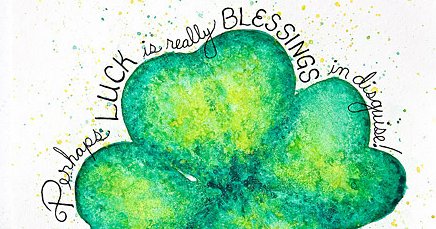 Lucky and Unlucky Days
Lucky and Unlucky Days
You might want to plan moving, traveling, major purchases, court dates, and weddings around these dates, avoiding the unlucky days and utilizing the lucky ones.
- These are the lucky days in October:
3, 7, 16, 21 and 22. - These are the unlucky days in October:
4, 6, 9, 11, 17, 27 and 31.
Fatal Days
The third and tenth with poisoned breath
To men are foes as foul as death.
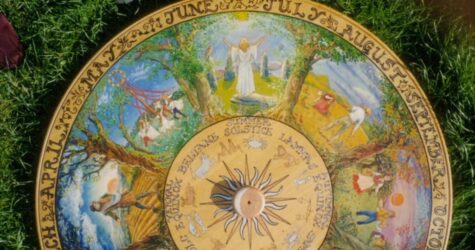
Holidays and Holy Days
Many of the holidays begin on the eve of the night before and end on the eve of the day of. It’s also important to remember that the dates of archaic festivals and feast days may vary widely depending on the source.
October 1
- 1: Festival of Fides – the Roman goddess of good faith, honesty and oaths.
October 2
- 2: Honor Your Guardian Angel Day
- 2 » Day of Ekadashi (Hindu)
October 4
- 4: Ieiunium Cereris – Fast of Ceres
- 4: Blessing of the Animals
October 5
October 6
- 6: Day of Bad Omens (also Jul 18)
October 7
- 7 » The Noumenia
October 8
October 9
- 9: The Festival of Felicitas – the Roman goddess of good luck and joy.
October 11
- 11: The Meditrinalia – the festival of Meditrina, the Roman goddess of healing.
October 12
- 12: The Festival of Fortuna Redux – the Roman goddess of successful journeys and safe returns from those journeys.
October 13
- 13: The Festival of Fontus – the Roman god of springs.
- 13: Winter Nights – Sacred to Freya
October 14
- 14 » Elder’s Day (China)
- 14 » Double Ninth Day (alternatively celebrated on Sept 9)
October 15
- 15: Equirria
October 16
- 16: Noah Webster’s Birthday
- 16 » Day of Ekadashi (Hindu)
October 17
- 17: Double Ninth Day (or Sept 9)
October 19
- 19: The Armilustrium – the second festival of Mars, the Roman god of war. On this day, military arms were ritually purified and put in storage for winter.
October 20
- 20 thru 31 » Whitby Goth Weekend
October 22
October 23
- 23 » Make a Difference Day (4th Saturday in October)
- 23: Slap Your Annoying Coworker Day
- 23: Swallows depart from San Juan Capistrano Day
October 27
- 27: Mice Wedding Day (alternative date Nov 8th)
October 28
October 29
- 29 thru 31 » Whitby Goth Weekend
October 30
- 30 » Dakini Day (Tibetan)
October 31
- 31: Halloween
- 31: Nut Crack Night
- 31 » Christ the King – last Sunday in October (alternative dates Nov 20 thru Nov 26)
- 31 thru Nov 1: Samhain – the Celtic festival marking the beginning of the winter and the Celtic New Year. Also the rebirth of Caileach Beara, the Celtic goddess who turned to stone on May 1 (Beltane).
 Saint Days
Saint Days
There is a surprising amount of magick associated with Saint days. This is a very short list of the Saint days in October, there are many many more. As time goes by I may end up listing them all, but for now, this is what I have.
- 4: St Francis Day
- 27: Day of Martyr Nestor of Thessalonica
Recipes For October
- Nine Layer Cake – Double Ninth Day
Seasonal recipes, including recipes for new and full moon ceremonies, ancient Roman holidays, Asian festivals and more can be found here: Seasonal Recipes.
![]()
Notes:
Any October lore, almanac, astrological, and celebration dates that have been shared after this post was published can be found by searching the October posts to see what’s new.
A lot of work went into this post. It was compiled from various sources by Shirley Twofeathers for The Pagan Calendar, you may repost and share without karmic repercussions, but only if you give me credit and a link back to this website. Blessed be.
As the year comes to a close and Samhain approaches, the Ivy moon rolls in at the end of the harvest season when successes and losses must be accounted for. Ivy often lives on after its host plant has died, and reminds us that life goes on and there is time to be reborn.
The Ivy teaches us that restrictions are necessary to help us hone our skills. During this month remember that your enemies are your teachers and that opposition is a blessing in disguise. Focus on energy that strengthens your resolve.
- Dates: September 30 – October 27
- Celtic Name: Gort (pronounced go-ert)
- Language of Flowers: Friendship, Fidelity, Marriage, Assiduous to Please (as a sprig with trendrils)
- Qualities: Fertility, Fidelity, Immortality, Resurrection, Rebirth, Healing, Feminine, Winter
- Themes: Rebirth, Cleansing, Self-improvement, Boundaries, Healing, Protection, Cooperation
The Month of the Ivy is the perfect time to banish the negative from your life. Avoid the things that are bringing you negativity, work on improving yourself, place a barricade between you and the things that are toxic to you.
Energy that boots your sense of responsibility will make you ready for what lies ahead. Be prepared to take the long-term view and accept and celebrate your life as it is right now. Trust that the Ivy Moon will prepare you to receive an answer to your prayers at exactly the right time. Be patient and you will be guided to your answer.
You can use the month of the Ivy Moon for energy and rituals for protection, or harness its energy to make charms that will strengthen resolve and help you face challenges. It can also be used in magick performed for cooperation, and to bind lovers together.
Ivy the Survivor
The Ivy Celtic tree sign is blessed with the ability to overcome all odds and can survive in any situation. People born under the energy of the Ivy are loyal, compassionate and have a sharp intellect. Life may be unfair to them at times, but they endure the troubles with soulful grace. They can be drawn to the spiritual world and their faith is deeply rooted. Ivy signs are charming, soft-spoken and have a good compatibility with the Oak and Ash signs.
People born under the Celtic tree Ivy sign are very giving. They are the people that are always willing to help those less fortunate and in need. The Ivy sign is very connected spiritually and their faith often sees them through the tough times they often experience.
They can be on the shy side, but have a very social nature. They are charismatic and charming and can be quite a delight in social situations.
Ivy Magick and Lore
The Celts interpreted the ivy to symbolize friendship and connection to others. Once those connections were established the lesson progressed to also demonstrate growth through the many twists and turns of regular life. Ivy is very hearty also, which goes to further the message of growing even during challenging times in our lives. Even after fire or severe weather, the ivy would return to growing, signifying the strength and will of the human spirit; surviving against all odds.
Ivy is an autumn and winter plant – a plant of fertility and rebirth with a feminine energy. She is a healing and nourishing plant that gives and receives support and provides insight – going her own way, yet forming connections as part of a community.
Ivy is friendship and fidelity, the loving ties of partnership and family – a plant to see us through hard times with loving kindness. Placing ivy leaves, lily petals and lilac flowers in a blue bag will prevent you from returning to a destructive relationship.
Most ivy plants have five-pointed leaves, making them a symbol of protection (signifies the harmony of the elements unified by common bonding energy). To guard against accidents while driving, carefully secure an ivy leaf on the dashboard of your car.
Ivy grows in a spiral formation reminding us that each cycle of the seasons brings us closer to the center, to spirit.
Churches have used holly and ivy for their Christmas décor since at least the 15th century, with holly representing Jesus and ivy, the Virgin Mary.
It was believed that ivy should only ever be brought into the house for Christmas and was unlucky at any other time – along with all the other Christmas decorations, you should be sure to remove the ivy by Twelfth Night, though!
On New Year’s Eve, you could lay an ivy leaf in water and leave it there, returning to it on Twelfth Night – if the ivy was green and healthy, it augured that the upcoming year would be happy. If, however, the ivy leaf had turned black, illness would come. Worst of all, if the ivy leaf was decayed and disintegrating, an untimely death was foretold!
Grow ivy vines around the front door of your house to prevent negativity from entering your home. A house covered in ivy was believed to be lucky – the ivy would bind the family together and bring wealth to the inhabitants. Ivy also protected the householders from witchcraft and the Evil Eye!
If ivy on a house withered and died, disaster would unfold – Welsh folklore said, specifically, that the house would pass to others.
Ivy leaves swept around an area were thought to cleanse an area of negativity and ill-fortune, and bring good luck instead. But you should take care not to use the ivy leaves picked from a church! To pick just a single ivy leaf from a church meant sickness would befall you!
House Protection With Ivy
Utilize the magic of ivy to protect your home from negative influences. You will need:
- A black candle
- Lots of ivy branches
Light the candle and say, “I call upon the spirits of this place, come in peace.”
Make a circle of ivy branches on the floor and step into the center.
Turn to the north and recite, “Spirits of the Earth protect me.”
To the east say, “Spirits of air protect me.”
To the south say, “Spirits of fire protect me.”
To the west say, “Spirits of water protect me.”
Place the branches that formed your circle at the boundaries of your property.
Sources:
The Dance of the Devils (La danza de los diablos) is a dance performed in Costa Chica, the Pacific coast of Guerrero and Oaxaca in Mexico. As part of the ‘Day of the Dead’ festivities celebrated on the last days of October and the first days of November in Mexico. Its purpose is not so much to terrify however as to amuse and draw the community together while paying reverence to the spirits of the dead on the Day of the Dead.
Men dressed in rags and high boots perform the Dance of the Devils in Afro-Mexican communities. During these celebrations young men dress up as cowboys or as dead people, in which case they wear dusty clothes covered with terrain (to represent the passage of time and the fact of being buried underground). Their faces are covered with masks made of leather or paper with long beards and hair. A black beard represents a young devil, a white beard represents an old one. A small pair of goat or deer horns crowns the mask.
The men dance through different villages on All Souls Day, making noise and playing with children and young people by flogging them with a whip.
An elder diablo called el Terron, and a female diabla called la Minga, who carries a baby doll, lead the dancers. The elder diablo plays and whips the other diablos into dancing and chases la Minga around with the whip because she interrupts the concentration of the devil dancers. One way that la Minga attempts to disrupt the other dancers is by seduction, the Minga also tries to give her doll, which is a symbol of her productive power, to the dancers or to anyone in the audience, seeking a father to her ‘baby’.
The face of the men performing the dance is covered with a leather deer mask with horns and An elder devil, called Tenango, whips the other devils during this performance. Groups of 24 dancers (the devils) stomp and twirl in rows or circles along the streets; eventually, they stop at the houses where the owner gives them money or food for dancing.
Origins of the Dance of the Devils:
The Dance of the Devils is part of the ceremonial commemoration of the dead. It is a celebration of colonial origin, which was introduced by the black people of the Costa Chica of Guerrero and Oaxaca, who were brought there as slaves by the Spanish colonizers to work in mines, cotton plantations and cattle ranches.
From Río Grande, in the town of Tututepec, on the Oaxacan coast, to Tenango, in the municipality of Azoyú, to the north, this dance recalls the past times when ranchers or cowboys used the whip as well as trumpet to groups of wild cattle in order to force them to cross the Sierra Madre del Sur, to reach the plateau and sell the animals.
The Devils in the Mexican dance also use the whip, and behave according to the cowboy stereotype, that is, as brave and strong man. This performance, however, is also a historical memory, which becomes a ritual memory to the black population which was an intermediate caste, between the indigenous and the white land owners.
The black population who arrived in Mexico from very different lands such as Africa and the Antilles, bringing different languages and cultures, could not recreate a black culture of African traits, as could happen instead, to various degrees, in other Afro-American regions. These people therefore in their segregation from festivities and public celebrations organized by the masters of the haciendas, used to perform their own festivities secretly, by performing rituals to their African gods, playing drums and dancing.
At the same time, however, they borrowed elements of some indigenous and Catholic traditions and readopted them – with imagination and joy – to overcome the pain of domination and the humiliation of banishment.
It is no coincidence that the celebration of their ancestors is performed through the cowboy/devil figure. In this dance the ritual action harmonizes gestures and words. Devils are the dead who revive to do mischief, to steal, to sow fear and laughter. The dance could also be called the ‘Devil’s Game’, a game designed to laugh at the forbidden: a capataz (a boss), a bad mother, or a violent and bossy father.
The function of the Dance of the Devils, from a social aspect, is to cleanse and protect the community from spirits that carry evil energy. It can be viewed a way to control evil. In a sense, the dance is used to call the tono spirits of the ancestors to heal the community similar to the way an individual might be healed; the masks and the boite drum call the spirits and the dance is the mode of healing. Trance possession, another traditional healing mode, is also part of these dances, as a means to form a connection between the spiritual and material.
The dancers use their bodies to bring the spirits and form a bond between them and the community. “As they dance, they create an aura, which begins to rise and cover everyone who is sitting there. ” Even the children will come and sit quietly and watch. The force, she says, starts in the dancers’ hands and continues through their feet, legs, hips, shoulders, and faces until they are entirely transformed. The wearing of the tono masks allows them to achieve a more powerful transformation.
About The Dance:
The dance itself is strikingly similar to the egungun dances of West Africa; the performance is a form of ancestor reverence, and similar dances that may be seen throughout the Diaspora (the dispersion of the people from their original homeland). While the Dance of the Devils occurs within a context that includes European and Native influences, the core of the dance, its meaning and specific elements, are African.
The Dance of the Devils can be traced to Europe during the Middle Ages, but according to an Afro-Mestizo elder, the devils are spirits of the dead and not devils in search of souls. They are actually ancestral spirits whose presence is celebrated and encouraged. Similar to a dance performed by the Abakua in Cuba, dressing as a diablo (devil) symbolizes the willingness to allow the spirit to possess your body.
The egungun masquerades of West Africa are, like the Dance of the Devils, performed as part of a feast of the dead. Masks are worn which represent the dead, symbolically, but not as individual persons; flogging with whips is intended to promote growth and maturity in young men and fertility in women. The egungun dances were a strong social force in the societies where they originated, especially in times of unrest or external threat.
Another similarity is that while only men generally perform the dances, there is often at least one woman who either participates on some level or teaches the dance.
It has been suggested that the presence of the whip is a reference to the relationship between the former slaves and their overseers. However, the presence of flogging in the egungun dances of West Africa, when compared to Nana Minga and her baby, suggests that flogging is another African retention and bears its original symbolic meaning of fertility and protection against evil spiritual energy.
The dance being performed on the Day of the Dead leads one to think that the dance relates to the supernatural world of the spirits. The fact that the dancers dress in cowboy clothes and wear masks made of horse hair may be interpreted to mean that the dance represents the spirits of dead cowboys, the employment of many of the Afro-Mestizos cimarron ancestors. However, the masks, which appear animal-like, may in fact represent the tono spirits of ancestors, an idea supported by the presence of the boite drum.
The boite or bute, is a large gourd with a goatskin head; the drum is played by moving a stick through a hole in the center to create a vibration, not by striking. It is very similar to a drum used by the Abakua, an all-male secret society in Cuba, and is described in a similar fashion, as having the voice of a big cat, a leopard or jaguar, because of the roaring sound it makes.
When attempting to heal someone of sickness Afro-Mestizos call the animal tono of the sick person. Finding the person’s tono is a way to determine if the sickness is caused by the animal’s death. Healers in attempt to cure a person called the leopard, using the roaring sound of the boite drum to simulate the voice of the big cat.
Sources:
Whitby Goth Weekend is an alternative music festival held in Whitby. The event consists of two nights of live bands at the town’s largest venue, The Spa Pavilion, and three days of alternative trade stalls at the Spa Pavilion, Whitby Leisure Centre, and Whitby Brunswick Centre.
Dates for 2019 are as follows:
- 12-14 April
- 25-27 October
The festival was held yearly until 1997, when it became twice-yearly in April and October. It has grown into one of the world’s most popular goth music events attracting around 1,500+ attendees from across the UK and beyond. The term “Whitby Goth Weekend” is sometimes used as a generic term to describe events during the week in Whitby as a whole, although the name of the event and its associated logo are registered trademarks of Jo Hampshire of Top Mum Promotions.
The main event is held in the town’s largest venue Whitby Spa Pavilion (known as the Spa) and the Bizarre Bazaar ‘Goth Market’ is also held there and at Whitby Leisure Centre and the Brunswick Centre. Access to the Spa in the evening requires a ticket and live bands play on both Friday and Saturday from 08:00 until about midnight.
The “weekend” starts during the day on Friday and fringe events are held on Thursday, Sunday and Monday including club nights, markets, and a charity football match between visiting goth team Real Gothic, and local team Stokoemotiv Whitby.
During the October/November event there is an independent custom car show, ‘Whitby Kustom’ in the grounds of West Cliff School. There are also several “meet ups” aimed at goths with a particular interest, e.g. Lolita Goth.
Newbies who have not attended the event before are referred to as “Whitby Virgins”. To help introduce them to the event, there was a WGW Virgins Meet Up on the Friday morning at the Spa until about 2014.
In the mid-2000s the October weekend on or near Halloween began to attract large numbers of non-goths in Halloween, horror, historical, fantasy and sci-fi costume, which has led to an increase in photographers and visitors. The weekend now attracts other alternative subcultures, including Victorian vampires, rockers, punks and members of the steampunk subgenre.
Some regulars consider it no longer a purely “Goth” weekend, and it was acknowledged by Hampshire in the 2014 Whitby Goth Weekend Guide that in order to survive the event would have to diversify into other areas that have influenced Goth.
Concerns have grown about disrespect being shown to the graves in St. Mary’s Churchyard by photographers using them for photographic purposes which has resulted in a petition to have the area closed during the event, an action that Whitby Goth Weekend fully supports. The Bram Stoker Film Festival, which also took place in the town, rehashed a proposal to build a film set graveyard which photographers would be charged to use.
Sources:
Dakini day, celebrated on the 25th day of each lunar month in Vajrayana Buddhist traditions, celebrates the feminine energy of wisdom. Devoted Buddhists will celebrate with a Tsok (Tsog), a feast including food, singing, a group (or single) sadhana full of sound and celebration. Most Tibetan Buddhist temples and meditation centers try to arrange a monthly Tsog on this day each month, with celebrants bringing food as offerings. It is always a happy day, that invites blessings not only for the attendees, but for all sentient beings.
This is one of the special days during a month, when Vajrayana practitioners perform a ritual of offering and purification of their commitments. It is believed that on this particular day, all the Dakinis gather in special sacred places and their energy is potently vivid and present at that moment.
When we perform practice on those auspicious days, we can connect with this potent energy and thus gain a lot of merit. It allows us to develop our practice and capacities, as well as purify our defilements and mistakes that we have accumulated with time. In this way, Dakini Day becomes very important for Vajrayana practitioners.
What is a Dakini?
The Dakini is a female being of generally volatile temperament, who acts as a muse for spiritual practice. Dakinis can be likened to elves, angels, or other such supernatural beings, and are symbolically representative of testing one’s awareness and adherence to Buddhist tantric sadhana.
Dakinis are portrayed as elusive, playful and often fierce and naked to symbolically convey how elusive true Wisdom encompassing “Emptiness” can be.
Without contradiction to their role as exemplars of Emptiness, Dakinis can also represent fierce activities, such as protection — the ferocious protective love of a mother.
Khandro Rinpoche defines the authentic Dakini principle as “a very sharp, brilliant wisdom mind that is uncompromising, honest, with a little bit of wrath.”
Dakinis appear in many forms. “The Dakinis are the most important elements of the enlightened feminine in Tibetan Buddhism,” says American teacher Tsultrim Allione. “They are the luminous, subtle, spiritual energy, the key, the gatekeeper, the guardian of the unconditioned state. If we are not willing to invite the Dakini into our life, then we cannot enter these subtle states of mind. Sometimes the Dakinis appear as messengers, sometimes as guides, and sometimes as protectors.”
Dakini are timeless, inorganic, immortal, non-human beings who have co-existed since the very beginning with the Spiritual Energy. In some New Age belief systems, they are angelic. This New Age paradigm differs from that of the Judeo-Christian by not insisting on angels being bona fide servants of God.
Moreover, an angel is the Western equivalent of a Dakini. The behavior of Dakini has always been revelatory and mysterious; they respond to the state of spiritual energy within individuals. Love is their usual domain – one explanation for Dakini or angels supposedly living in the sky or heaven. Manifestations of Dakini in human form occur because they supposedly can assume any form. Most often they appear as a human female. By convention, a male of this type is called a ‘Daka’.
In Buddhism, typically, the male Buddhas represent compassionate means, while the female Buddhas represent Wisdom. The symbols of bell and vajra (Ghanta and Dorje) represent female wisdom — the bell, which makes the sound of “Emptiness” — and the Vajra, representing compassionate means.
Dakini’s have always been a part of Buddhism, starting with the Jataka’s (stories of Buddha’s former lives) in which “divine beings are described as travelling through the air. In Sanskrit, such a being is called a Dakini, a term generally translated as “space-goer,” “celestial woman,” or “cloud fairy.”
Dakinis are typically thought of as the emanation of the “Enlightened Mind” understanding Emptiness. Another concept usually tied to Dakini practice is “bliss” — the state of blissful awareness of emptiness.
It is a wonderful experience to have a moment that realizes emptiness, a feeling of joy-bliss rather than “nothingness.” This is why Dakinis are often portrayed as active, dancing, joyful or fierce, naked and unencumbered.
Five Dakini Healing Mantra
The meaning of Dakini is the female enlightened energy and the awakened state of consciousness. Therefore, chanting this mantra increases and enhances all enlightened feminine energy.
Bam Ha Ri Ni Sa
The 5 Dakini also represents each of the 5 Elements:
- BAM ~ Buddha Dakini ~ (blue) ~ Mind energy, pacifies Ignorance
- HA ~ Vajra Dakini ~ (white) ~ Body energy, pacifies Anger
- RI ~ Ratna Dakini ~ (yellow) ~ Knowledge/Qualities/Healing, pacifies Ego/Pride
- NI ~ Padma Dakini ~ (red) ~ Speech energy, pacifies Desire
- SA ~ Karma Dakini ~ (green) ~ Action/Removes Obstacles, pacifies Jealousy
This mantra is helpful for all female related health issues, transforms negative emotions, unblocks channels, and balance 5 elements. When chanting this mantra on Dakini Day, the power magnifies ten-fold!
After chanting, blow into a glass of water, which infuses the healing vibration into the water, drink, and continue to enjoy its healing properties.
Sources:
There is not a lot of information about this particular feast day and the dates given for it vary widely. Our calendar lists it as January 30 – 31, but some calendars assign it to January 17 – 18, others say April 18 – 19, May 26, July 9 – 10, or October 13. None of these calendars have any information other than that it is called “Feast of Charities” for the Greek goddesses known as the Graces. I don’t think anyone really knows much about it.
I did find a Feast of the Charities Ritual at Llewellyn. Here it is:
- Color of the day: Orange
- Incense of the day: Sage
Today is the Feast of the Charities. These old Greek goddesses of beneficence were known to the Romans as the Gratiae, or “Graces.” They are Aglaea, whose name means “splendor,” Euphrosyne, or “joy,” and Thalia, or “mirth.” The Charities bestow charm, beauty, and creativity on their worshipers. In this regard they serve a similar purpose to the nine Muses. Generosity and festive activities please these goddesses.
- Get some friends together and dress up.
- Arrange each other’s hair.
- Dance and sing, or perform some sacred theater.
- Visit an art gallery or walk through a street fair.
Alternatively, do something nice for the less fortunate. Bundle up old clothes you never wear anymore to recycle for the less fortunate, or hold a food drive and donate the results to a local charity. (Yes, the term comes from the name of these goddess, “Charities.”) You could also donate your money or time. Give of yourself, and you shall receive “grace” from the Charities in return. Be kind and giving, and your creativity will overflow!
